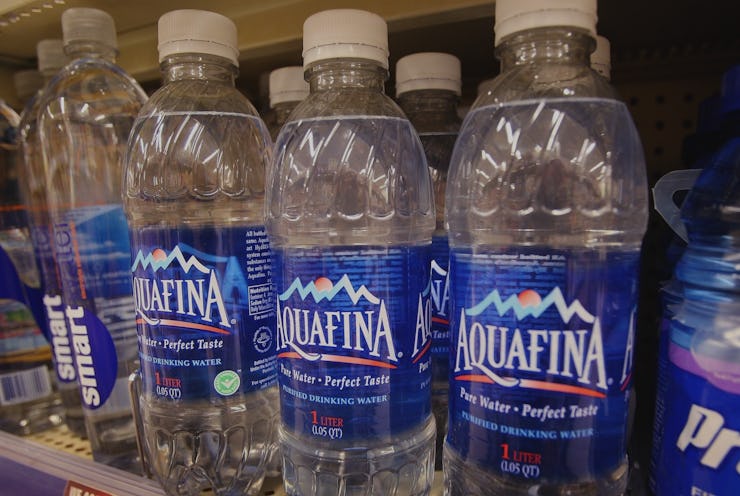Aquafina Admits It's Just Tap Water
We're paying 2,000 times more for bottled versions of the same water you'd take a bath in.

Update, October 26: Read Aquafina’s response to our report.
Original story:
File to: “Obviously. What kind of idiot do you take me for?” The world’s biggest bottled water brand is going to start admitting that it comes from the exact same source as the tap water disdained by snobs.
USA Today reports Aquafina has changed its labels to specify P.W.S. — Public Water Source — under pressure from Accountability International. PepsiCo spokeswoman Michelle Naughtron called this a “reasonable thing to do” if it helped people understand that they were paying a premium to have the same water they get in their bathroom sink labeled with a serene mountain scene.
And it’s quite a premium. ConvergEx Group Chief Market Strategist Nick Colas explained consumers were flushing thousands on their favorite label of H2O in an interview with Business Insider:
“The [bottled water] industry grossed a total of $11.8 billion on those 9.7 billion gallons in 2012, making bottled water about $1.22/gallon nationwide and 300x the cost of a gallon of tap water,” Colas says. “If we take into account the fact that almost 2/3 of all bottled water sales are single 16.9oz (500 mL) bottles, though, this cost is much, much higher: about $7.50 per gallon, according to the American Water Works Association. That’s almost 2,000x the cost of a gallon of tap water and twice the cost of a gallon of regular gasoline.”
Two thousand times what we spend on tap water! You have to hand it to their marketing department, and not just Aquafina. Fiji even managed to get a brand of bottled water under military dictatorship and shipped across the world showing up with Al Gore.
Throwing away money is one thing; throwing away all that plastic is entirely another. It’s almost a joke that we have a plastic mass double the size of Texas floating around the Pacific, or that almost every single seabird on the planet will have plastic in its digestive system by 2050. If those concepts are too abstract and you’d like a visual representation of the toll it’s taking on the environment, here’s an artist’s installation of a whale paddling across an ocean of 70,000 disposable plastic bottles.
See also: Consumer Protection Group Target Dasani’s ‘Misleading’ Label